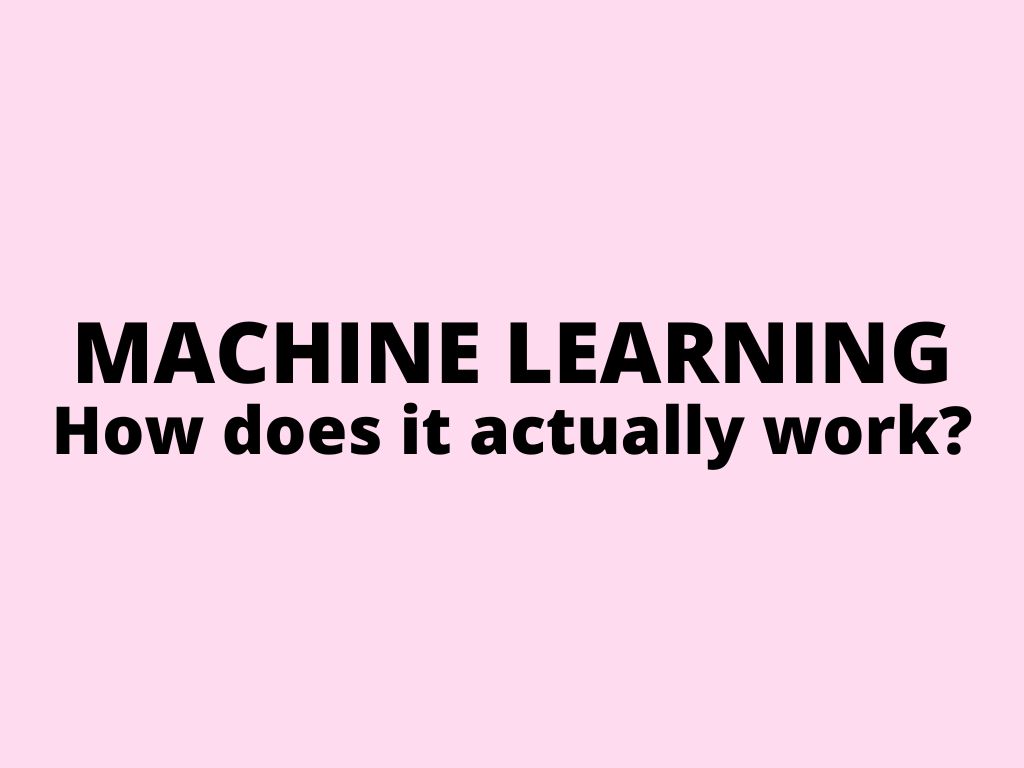
Machine learning – how does it actually work?
Lately, the term “machine learning” has been on everyone’s lips. But what’s the real scoop on how it works?
In a nutshell, it’s all about teaching computers to recognize patterns in data and make decisions based on them. Instead of manually writing out programs, algorithms are trained on heaps of data so they can “learn” to perform specific tasks on their own.
There’s a whole toolbox of machine-learning techniques out there. Let’s dive into a few of them in this article.
Regression – predicting numerical values
Regression models come into play when we want to predict a continuous numerical value based on input data. For instance, guessing a property’s price from its size, location, and so on. The poster child for regression techniques is linear regression, which fits a line through data points to minimize prediction error.
Classification – sorting into classes
Unlike regression, classification models aim to sort objects into classes or categories. Think of distinguishing between a cat and a dog in a photo or predicting whether a customer will stick with a company or jump ship based on their behavior. Common classification techniques include decision trees, neural networks, and support vector machines.
Clustering – finding similar points
Clustering algorithms seek out points in a large dataset that are similar to each other and group them into clusters or clusters. This technique is handy for things like customer segmentation for targeted marketing or organizing a vast number of documents into thematically similar groups.
Dimensionality reduction – simplifying data
We often encounter data brimming with attributes, which complicates processing and analysis. Dimensionality reduction techniques strive to reduce the number of attributes while retaining as much information as possible. For example, the principal component analysis method can replace a large set of original attributes with a smaller number of new variables.
Ensemble methods – strength in numbers
Instead of relying on a single model, we create multiple models and let them vote. For example, rather than using one decision tree, we might use a bunch of trees, each trained on different data slices. We then combine the results, say, by voting or averaging. This approach often leads to more accurate outcomes.
Neural networks – brain inspiration
Neural networks mimic the brain’s structure, consisting of simple computational nodes connected by links. By adjusting the weights of these links appropriately, the network can be trained to solve complex problems. In recent years, a special type of neural network, known as deep learning, has made significant strides in tasks like image recognition or speech processing.
The backbone of modern machine learning, especially deep learning, is the use of advanced high-tech computers, often referred to as high-performance computing (HPC) systems. These systems are equipped with powerful GPUs (Graphics Processing Units) or TPUs (Tensor Processing Units) designed specifically to handle the massive computational demands of training complex neural networks. HPC systems are crucial for processing large datasets, running simulations, and speeding up the training process, which can otherwise take an impractical amount of time.
The cost of these advanced computing systems can be substantial. Typically, funding comes from a mix of sources depending on the setting. In academic and research institutions, funding may come from government grants, research endowments, and partnerships with industry leaders. For private companies, especially those in the tech sector, investment in HPC infrastructure is often viewed as essential for staying competitive, with costs being a part of the company’s research and development (R&D) budget. Additionally, cloud computing platforms now offer access to HPC resources on a pay-as-you-go basis, making advanced computing power accessible to startups and smaller companies without the need for upfront investment in physical hardware.
The rise of cloud-based machine learning platforms has democratized access to advanced computing resources. Companies like Google, Amazon, and Microsoft offer machine learning services that run on their cloud infrastructures, allowing users to pay only for the computing resources they consume. This model has lowered the barrier to entry for innovative machine learning projects, enabling a broader range of companies and researchers to explore complex models without the need for significant capital investment in hardware.
Transfer learning – knowledge transfer
Instead of training a model from scratch, we can leverage knowledge gained from solving a similar problem. For instance, a neural network trained to recognize faces can be “retrained” to identify dogs and cats. Transferring learned features to a new domain often speeds up training and improves results.
With the advent of technologies like GPT-3, machine learning is not just about recognizing patterns or making predictions anymore. It’s also about understanding and generating human-like text, opening up new avenues in natural language processing and beyond. This leap forward has transformed how we interact with technology, making it more intuitive and human-centered.
We’ve seen a few examples of how machine learning works. The key is to find the technique that best matches the type of problem at hand and to train models on quality data. While the principles might seem straightforward, successfully deploying machine learning in practice is quite challenging. Yet, diving into this field is well worth it, as it opens up fascinating possibilities for data analysis and practical applications.
Was this article helpful?
Support us to keep up the good work and to provide you even better content. Your donations will be used to help students get access to quality content for free and pay our contributors’ salaries, who work hard to create this website content! Thank you for all your support!
Reaction to comment: Cancel reply